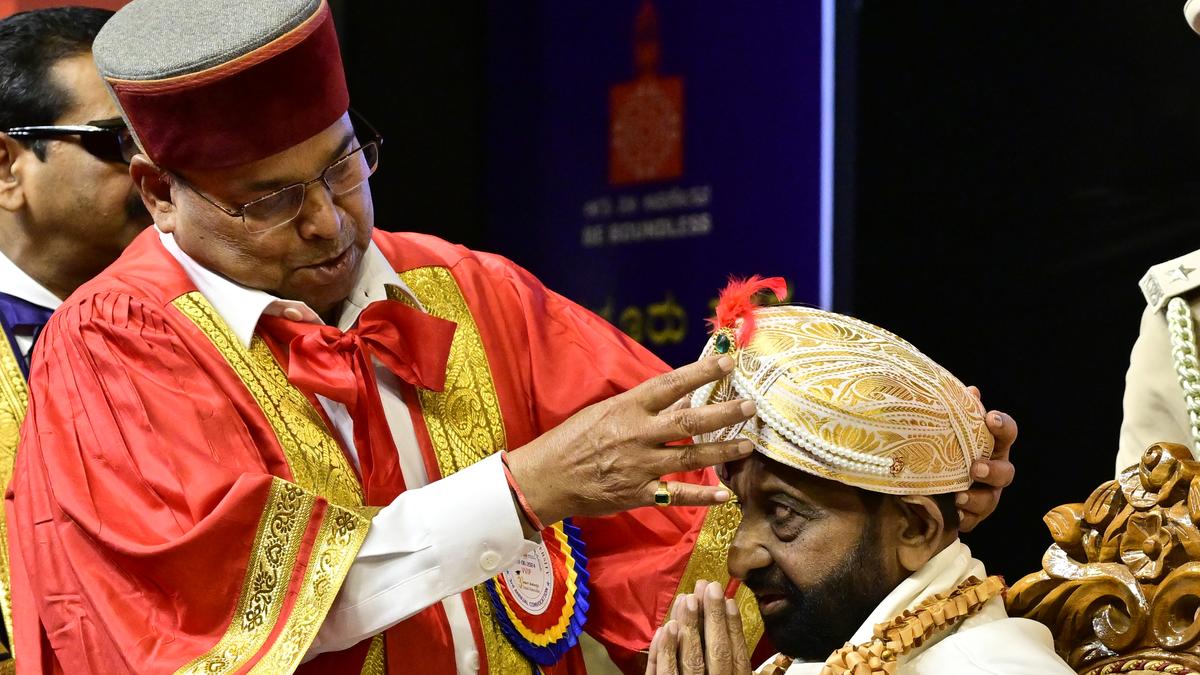
Gross enrollment ratio for higher education only 28.3% in the country, goal is to improve it to 50% by 2035: AICTE Chairman
The Hindu
Of the nearly 25 crore students who enrol for school education every year in the country, only 28.3% enrol for higher education and this is a cause for serious concern, said T.G. Sitharam, Chairman of the All-India Council for Technical Education (AICTE).
Of the nearly 25 crore students who enrol for school education every year in the country, only 28.3% enrol for higher education and this is a cause for serious concern, said T.G. Sitharam, Chairman of the All-India Council for Technical Education (AICTE).
He delivered the third convocation address of the Bengaluru City University (BCU) here on Saturday.
“Any developed country has to have a gross enrolment ratio (GER) of over 85% for higher education, but it is very low in our country. This is the challenge. The Union government now aims to improve the GER in higher education to 50% by 2035,” he said.
To increase the GER, Prof. Sitharam stressed the need to increase the number of universities and colleges in the country. “With 1,100 universities and 45,000 colleges across the country, we are able to serve only 4.3 crore postgraduate students. If 25 crore students, who enrol for school education, have to go for higher education, we need to double this educational network and infrastructure. To reach the goal of 50% GER in the next 10 years, we need a large number of universities. We also need to leverage digital technology to reach out to students,” he explained.
“‘Artificial intelligence (AI) and other emerging technologies are indeed transforming various aspects of our lives. While these advancements offer incredible potential, they also raise concerns about their impact on jobs, decision-making, and society. As machines and Al systems become more sophisticated, there’s uncertainty about job security in certain sectors. However, rather than fear these changes, we should embrace them and adapt to new methods of sustainability and growth,” he told the students. Prof. Sitharam also spoke about the need for interdisciplinary courses.
Governor Thaawarchand Gehlot, Higher Education Minister M.C. Sudhakar, and Vice-Chancellor of the university Lingaraja Gandhi were among those present.
A total of 35,912 students were awarded various degrees. Of them, 20,258 were female and 15,654 male candidates. Of the top nine ranks, eight were bagged by girls.

In a breathtaking display of musical prowess, the Singspirations, a Tiruchi-based choir group, in collaboration with the Glauben Ensemble and the Genesis Chamber Orchestra, presented a sublime performance of Wolfgang Amadeus Mozart’s Requiem in D minor, K. 626, in its entirety, mesmerising audiences.












